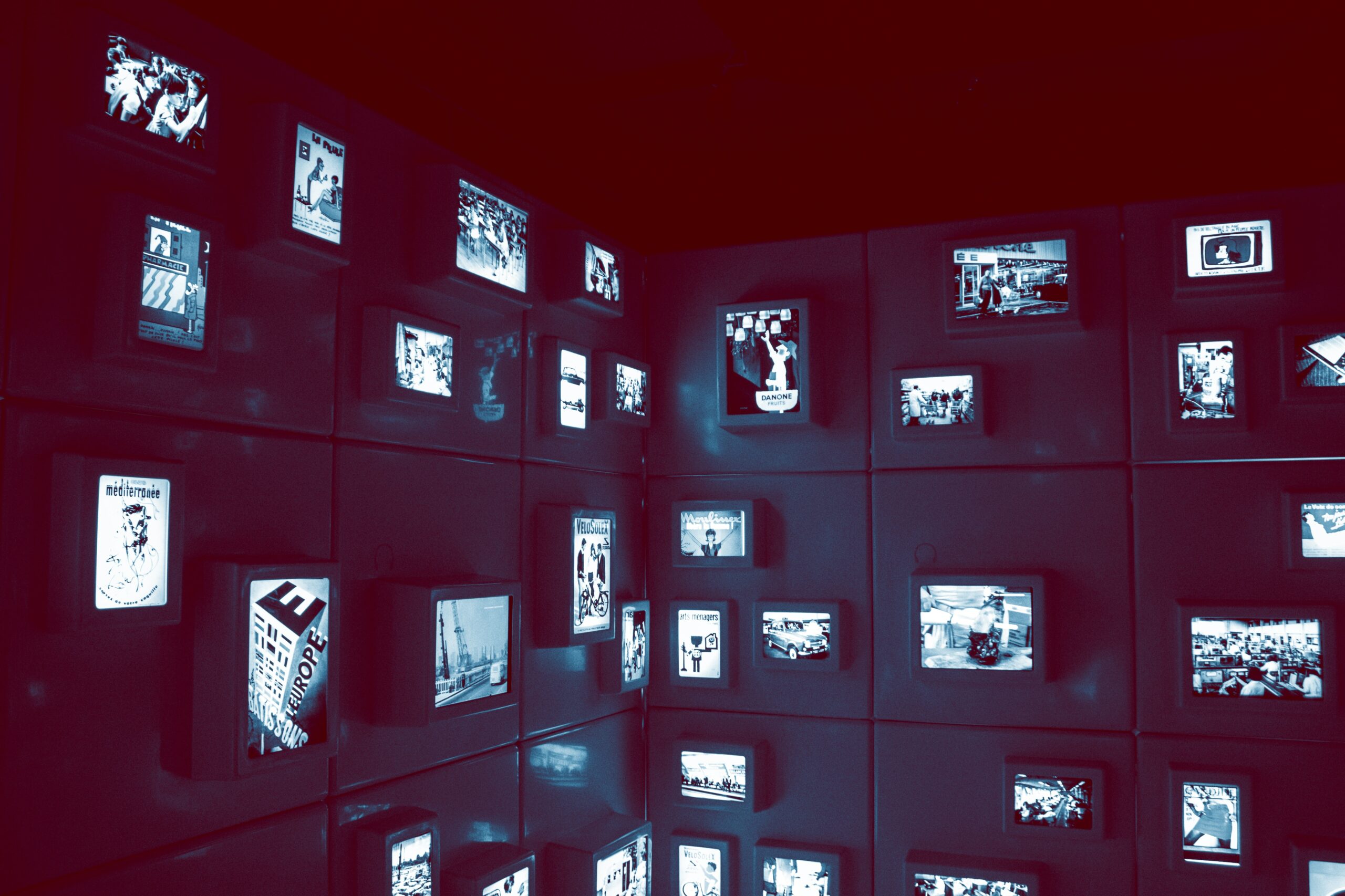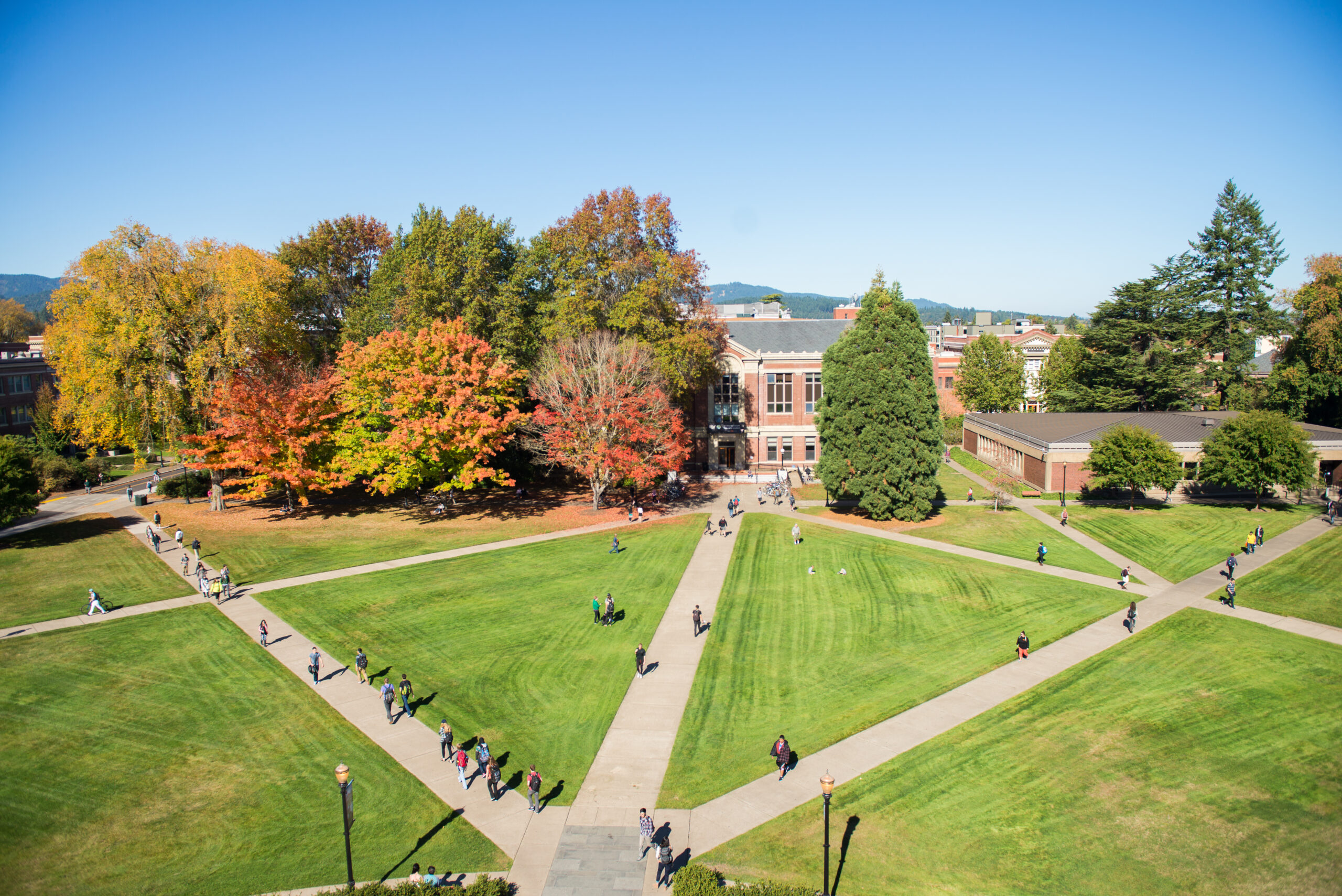Summer Projects in
Teaching and Learning Spaces
Academic Technologies
Posted on: September 30, 2023
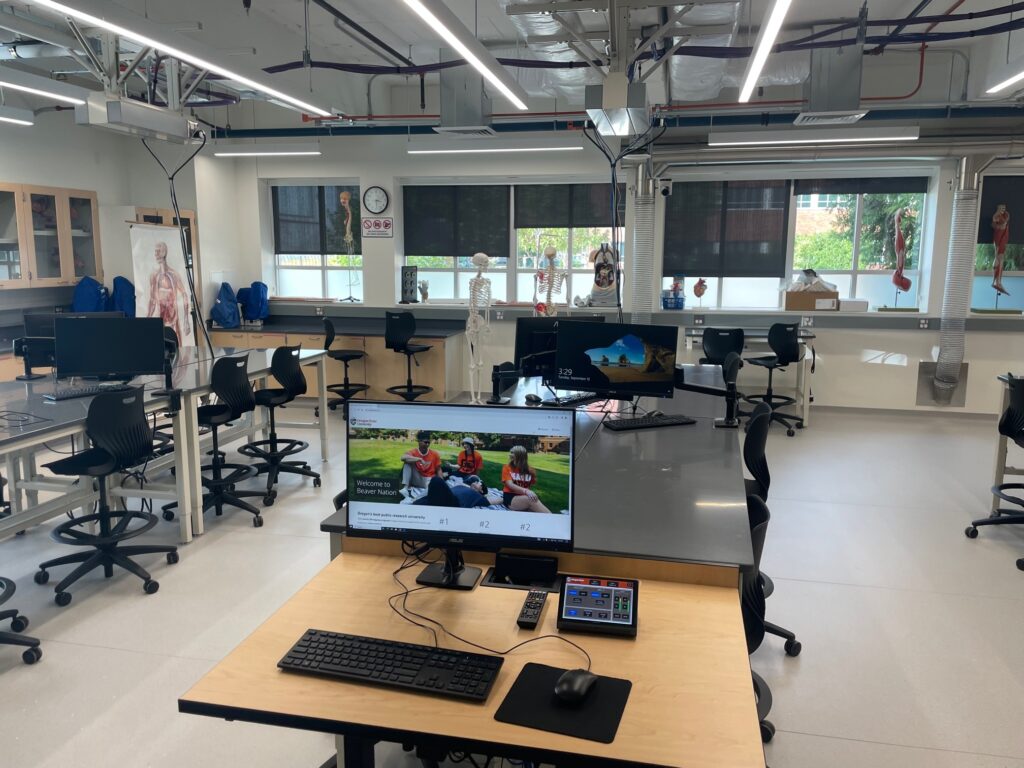
We are pleased to share some of the highlights of our Classroom Technology Services and Technical Services work during the summer of 2023. With the challenges of the supply chain impact on critical audio/visual components, our ability to schedule out the entire summer was limited. Our partners on campus have been patient and flexible with scheduling as the orders were filled after long delays. Specifically, Cordley West renovation (opened in Fall 2022), Fairbanks renovation (opened in Fall 2022), Dixon Recreation Center PaCS classrooms, ROOTS classroom upgrades, and others were added to installation schedules bi-weekly. Product on hand, and departments flexibility in scheduling and class relocation allowed several installations and upgrades to be completed over the summer session.
Fairbanks 204
AV over IP (AVoIP) system installed with student pods to share content in the CLA Digital Arts computer classroom.
We received positive feedback from Rick Febre, instructor in the GD program in Fairbanks Hall, who said,
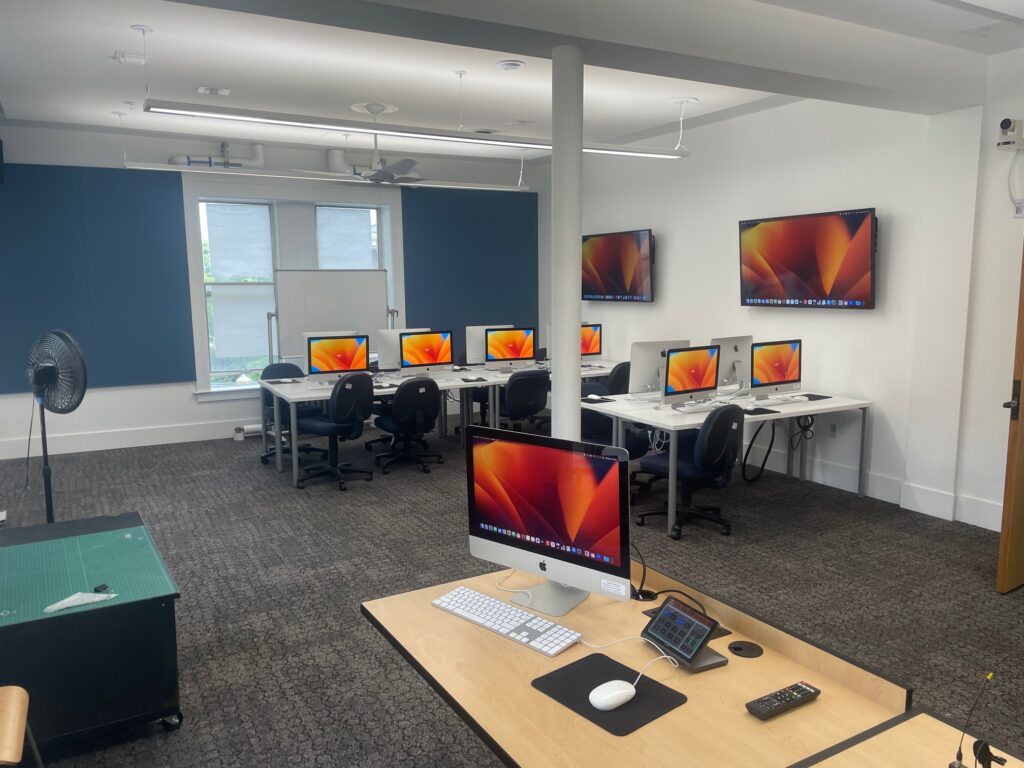
“The set-up is amazing! I just wanted to say thank you for your guys’ efforts.”
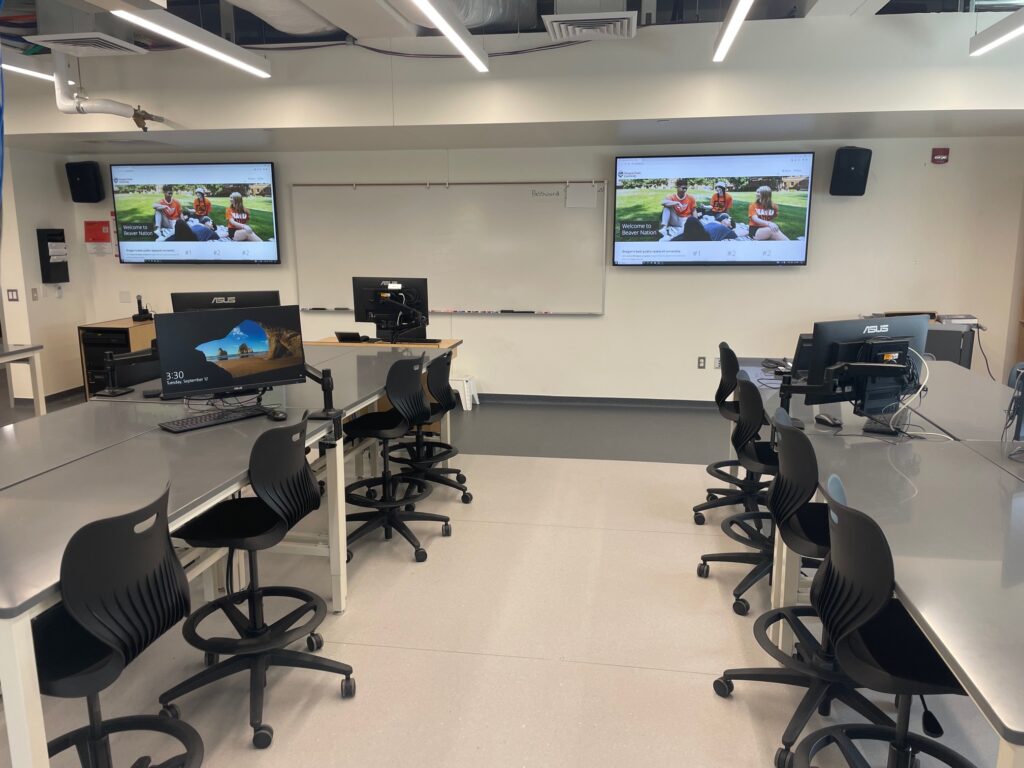
Cordley Hall 1518 & 2602
Special order change with manufacture, allowing acquisition and installation of 2 more lab classrooms in Cordley West. Project is almost complete as we look to the school year to schedule the final 2 spaces.
Hallie Ford 115 & 215
Cisco videoconferencing hardware retirement with complete Audio/Visual upgrade. Aligned with standard classroom configurations for 115, this space operates and can be supported in the same modality of all learning spaces on the OSU campus. 215 upgrades introduced a designated PC and video soundbar with integrated microphone aligning with simple conference room configurations for presenting in room, or web collaboration.
Cameron Ballard, Program Coordinator, share the excitement of the upgraded room.
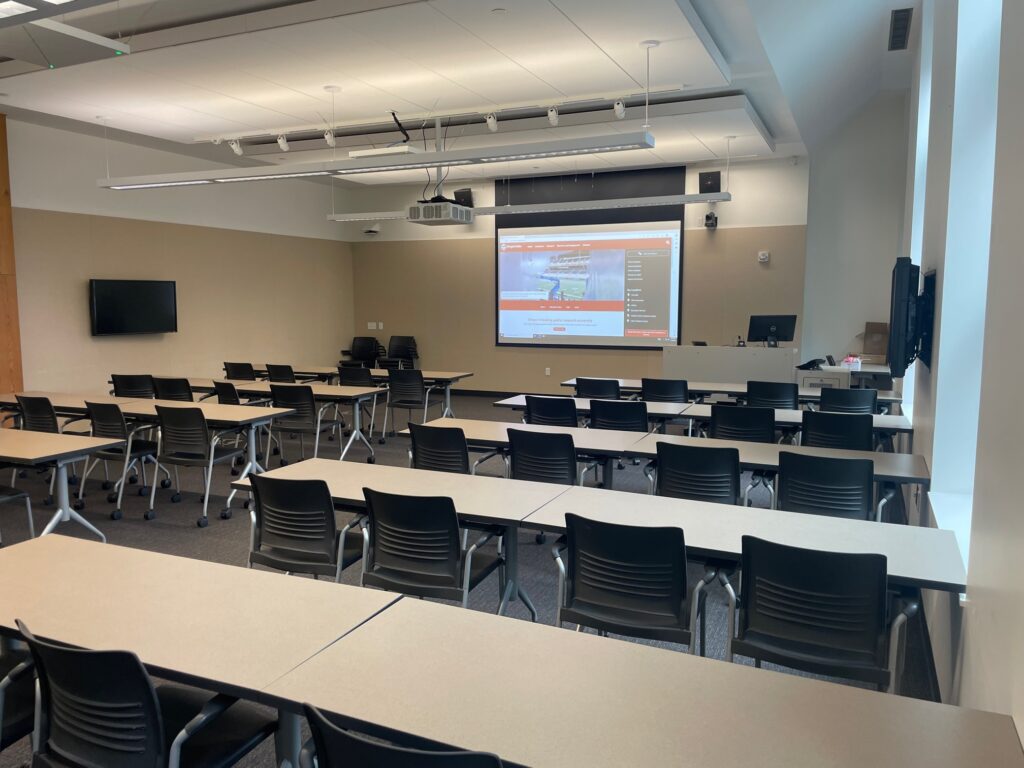
“Thank you again for all your help with our tech upgrades!”
AVoIP upgrades in the College of Business. 10 rooms completed, and 3 more to complete in the building.
Upgraded presentation technology with new direct view displays, control processor, user interface. Dual use with classroom assignments and serves as the Welcome Center for prospective students and families. Highlight is room 133, a 98” direct view display now provides a larger image to better serve the largest room in the Beth Ray Center.
PaCS classes served in 140J now have a standard classroom, the same as the OSU campus. Introducing web collaboration allows recording and remote participation.
Water damage to space during the roof repair in the summer of 2022 necessitated the room to been fully restored with new technology and standard dual projection user interface for users.
AVoIP upgrades to both spaces. Autzen classroom is a “no front” classroom with 6 images distributed on all walls. VLIB East was another Cisco videoconference hardware retirement with web collaboration upgrades; more in line with standard classrooms campus wide.
We are proud of our achievements and grateful for our collaborations with various departments and units on campus. We look forward to continuing our mission of providing high-quality classroom technology services that enhance teaching and learning at OSU.
Behind the Scenes:
AV over IP is a term that stands for Audio-Visual over Internet Protocol. It is a technology that allows the transmission and switching of audio and video signals over standard network equipment, such as Ethernet cables, routers, and switches. AV over IP has many advantages over traditional AV systems, such as scalability, flexibility, distance, management, and cost. AV over IP can be used for various applications, such as video conferencing, digital signage, video walls, remote monitoring, and more.
To understand how AV over IP works, let’s compare it to a traditional AV system. In a traditional AV system, you need dedicated devices to capture, transmit, switch, and display audio and video signals. For example, you may need a camera, an HDMI cable, a matrix switcher, and a monitor to connect a video source to a video display. The matrix switcher allows you to select which source goes to which display. However, this system has some limitations. You can only connect a fixed number of sources and displays to the matrix switcher. You also need long and expensive cables to extend the signals over long distances. And you need separate devices to manage and control the system.
In an AV over IP system, you replace the dedicated devices with network devices. You use an encoder to convert the audio and video signals into digital data packets that can travel over an IP network. You use a network switch to route the data packets to the desired destination. And you use a decoder to convert the data packets back into audio and video signals that can be displayed on a monitor or speaker. The network switch acts like a matrix switcher, but with much more flexibility and scalability. You can connect as many sources and displays as you want by adding more encoders, decoders, and switches. You can also use standard Ethernet cables or wireless connections to transmit the signals over long distances. And you can use a central platform to monitor and control the system remotely.
Recent Posts
Streamlining Digital Signage
In today's fast-paced world, the education sector is continually evolving to meet...
Read MoreSummer Projects in Teaching and Learning Spaces
We are pleased to share some of the highlights of our Classroom...
Read More
